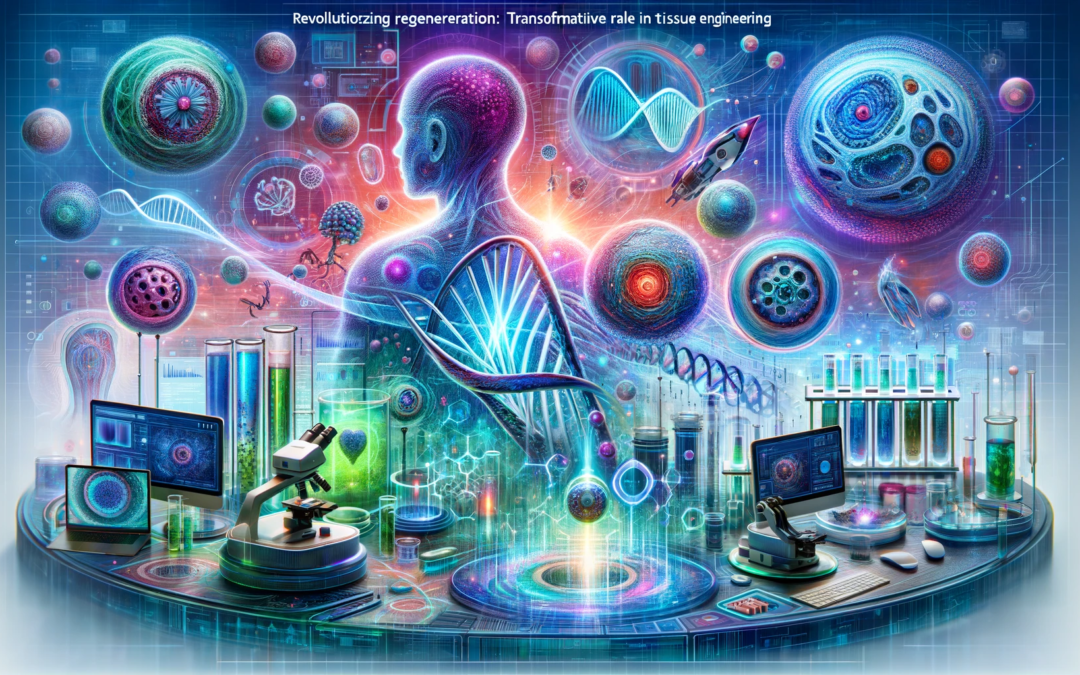Tissue engineering, the cutting-edge field that aims to regenerate and repair damaged tissues and organs, is revolutionizing modern medicine. But what if I told you that artificial intelligence (AI) is playing a transformative role in this already groundbreaking area? Strap in, folks, because we’re about to dive into the exciting intersection of AI and tissue engineering.
AI in Enhancing Research and Development
AI algorithms are not just for beating humans at chess or recommending your next binge-worthy TV show. They’re also helping scientists analyze complex biological data and gain a deeper understanding of tissue growth and development. With AI’s assistance, researchers can predict the outcomes of tissue engineering experiments and optimize laboratory processes. It’s like having a virtual lab assistant, but without the coffee runs.
Customization of Tissue Engineering
One size does not fit all, especially when it comes to tissue engineering. Thanks to AI, we can now customize tissue engineering solutions for individual patients. Personalized implants and organ regeneration are becoming a reality, and AI is at the heart of it. Imagine a world where your new kidney is tailor-made just for you. It’s like having a personal tissue engineer on speed dial.
Challenges and Ethical Considerations
Of course, with great power comes great responsibility. Integrating AI into tissue engineering isn’t without its challenges. Data quality and computational requirements can be stumbling blocks. And let’s not forget the ethical considerations. Handling genetic data and ensuring patient privacy are paramount. We don’t want anyone’s DNA ending up on the dark web.
Future Prospects and Innovations
The future of AI-assisted tissue engineering is mind-boggling. We’re talking about the development of complex organ systems and potentially reducing organ transplant waiting lists. Imagine a world where waiting for a new heart is as outdated as waiting for a dial-up internet connection. The implications for healthcare and society are immense. It’s time to buckle up and prepare for a tissue engineering revolution.
Collaboration Between Fields
To truly unlock the potential of AI in tissue engineering, collaboration is key. AI experts, biologists, and medical professionals need to join forces. By working together, they can create innovative solutions and achieve breakthroughs that would otherwise be impossible. It’s like the Avengers assembling, but with lab coats and algorithms instead of capes and superpowers.
Conclusion
The future of tissue engineering is here, and it’s powered by AI. From enhancing research and development to customizing tissue engineering solutions, AI is transforming regenerative medicine. But this is just the beginning. We need to keep pushing the boundaries, investing in research, and fostering collaboration between disciplines. The possibilities are endless, and the revolution is underway.
So, whether you’re a tissue engineering enthusiast, a medical professional, or just someone excited about the future of healthcare, keep an eye on the exciting developments at the intersection of AI and tissue engineering. It’s a match made in biomedical heaven.
Meta Description:
Discover how the intersection of AI and tissue engineering is revolutionizing regenerative medicine. Explore the role of AI in enhancing research, customization, and the future prospects of tissue engineering.










